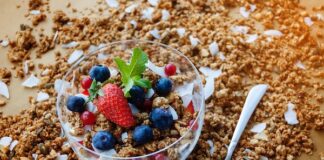Even if you are a calorie counter there is a lot you don’t know about your food.
Recently the researchers from University of North Carolina at Chapel Hill started creating a gigantic food map. We aren’t talking about a food map that directs you to the nearest restaurants, but one that sorts what foods Americans are buying and eating. Think of it as a “mapping the food genome.”
The database will have the ability to sort thousands of brands and variations. Think of orange juice. There are hundreds of brands and variations in the morning juice that the government previously had classified in one way. But the UNC researchers found a way to take the different brands, consider their varied ingredients and nutritional labels and then average them out to more exact data on a well-known food item. Professor Barry Popkin and his research team will basically be figuring out the OJ equation over and over again.
The massive project will be the first evidence on how rapidly the food marketplace is changing and it will share the best data on the exact ingredients and nutrients that people are eating. Until now, the only way to find out data on how many calories people consume has been from the government data which is rapidly behind the times in a fast-paced market.
The research will provide information that will be used to better target nutritional guidelines, push companies to cut down on certain ingredients that can help with disease research, and answer questions about our food supply. It is a way to improve the public’s health knowledge and we are all ears.
What do you think about the food mapping project? Is there any data regarding nutrition that you hope they uncover?
Feature image via









![Daily Bite [Make]: Philly Cheesesteak Stuffed Bell Peppers](https://dashofwellness.com/wp-content/uploads/2013/01/Philly-Cheesesteak-Stuffed-Pepper-Daily-Bite-1-100x70.png)

Oh my, this sounds like an interesting project, I am curious to see what they do uncover… However, ignorance is bliss. LOL!
[…] New Food Map Details What We Eat (via Bite Size Wellness) Researchers at the University of North Carolina at Chapel Hill have begun mapping the “food genome” in order to help consumers become more informed than ever about the food they’re eating. Learn more about the project at BSW. […]